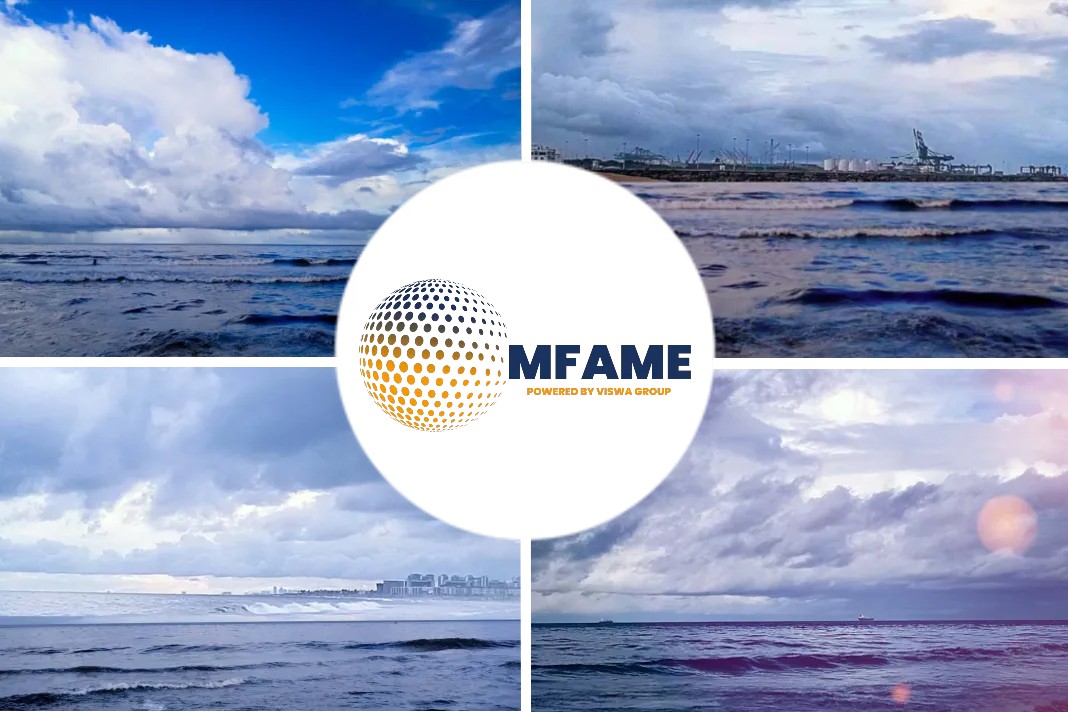- Ammonia has traditionally been produced from hydrocarbons.
- There is potential for carbon capture to reduce the emission footprint of production(‘blue ammonia’).
- There is potential for for production from renewable, non-carbon sources such as wind or solar energy (‘green ammonia’).
- Ammonia certainly has the energy potential for a marine fuel, with an energy density of around 3kWh per litre.
Wartsila is beginning to look more closely at how existing and newbuild vessels might use clean fuels, says a press release published on their website.
Ammonia is near the top of the list for many shipowners.
Challenges and new projects
Challenges including toxicity, corrosiveness, slow ignition, and NOx emissions will require a combination of new engine and fuel gas supply system technologies. The volume and weight of storage required also have a significant impact on the operating range of vessels.
These challenges are being investigated. Handling requirements, such as the requirement for stainless steel tanks to handle ammonia’s corrosive properties, are relatively well established from decades of transporting ammonia in LPG carriers. A fuel cell project underway with offshore shipowner Eidesvik is further exploring how ammonia needs to be handled as a fuel rather than as a cargo. On the engine side, Wärtsilä Marine Power performed combustion tests using ammonia in March, and plans to begin its first full-scale, four-stroke engine tests next year in collaboration with shipowner Knutsen OAS, energy company Repsol and the Norwegian Sustainable Energy Catapult Centre.
Starting the usage of Ammonia
According to Kaj Portin, General Manager, Fuel & Operational Flexibility, Wärtsilä Marine Power, engine development will follow this anticipated trend, moving from a diesel engine with ammonia capabilities to an engine that is more optimised for ammonia.
“The starting point is to use a small amount of ammonia while keeping the same performance as diesel,” he says. “As we increase the ratio of ammonia, we will look to optimise towards that fuel rather than diesel or gas.”
From an engine perspective, then, a shipowner interested in using ammonia would need a diesel or dual-fuel engine that was built using materials that can handle the corrosive nature of ammonia. Materials aside, an engine very similar to today’s diesel or dual fuel engines – ammonia can be used in both – could use small quantities of ammonia as a drop-in fuel, while later engines will be optimised for use of ammonia as a main fuel. Wärtsilä is in the process of defining the engine components and modules that would need to be updated on existing engines to enable the use of high proportions of ammonia.
Some uncertainties remain
One unknown is the impact of the increased weight of fuel storage. Combined with the low energy density and the lower allowed loading limit compared to current fuels, this has a significant impact on the operating range of ammonia-fuelled vessels. So while it may be easy to prepare LNG-fuelled vessels for a switch to take ammonia fuel, preparing for the operational implications are more challenging.
The second element is that regulations have not yet specified the pressure and temperature at which ammonia needs to be stored on-board a vessel. Ammonia can either be pressurised or kept in cryogenic liquid form close to ambient pressure. According to Matthias Jansson, General Manager, Fuel Gas Supply Systems, Wärtsilä Marine Power, there are strong signals that cryogenic storage will be considered safer when analysing the consequences of a potential leak.
Balancing flexibility and simplicity
What is already clear is that ammonia readiness is not just about the steel tank; it also means looking at the process equipment and all the consequences around a leak of ammonia.
The transition to deploying ammonia as fuel will have a significant impact on fuel handling on board. For example, if ammonia is used first as a drop-in fuel alongside a dual-fuel LNG vessel configuration, there will need to be three different types of fuel tanks and fuel handling systems onboard for LNG, diesel and ammonia. Wärtsilä is investigating whether fuel mixing systems are feasible – potentially based on its existing technology for mixing LNG and volatile organic compounds as fuel. Whatever the solution will be, striking the balance between fuel flexibility and operational simplicity will be a critical consideration for shipowners.
Emissions abatement and regulation
An ammonia-ready vessel will also have to abate the increased NOx that is likely to come with the fuel. Wärtsilä will be exploring this aspect in particular as it embarks on its first full engine tests. Some form of aftertreatment is likely to be needed to bring NOx down to IMO’s Tier II or Tier III limits, and shipowners will need to account for this cost and space.
The cost of planning for ammonia-fuelled vessels should be reduced when the fuel is included in the IGF Code governing the low-flashpoint fuels, providing more clarity on regulatory requirements. At present the code only covers LNG and methanol. Several of the projects in which Wärtsilä is now participating will feed into the development of IGF Code regulations for ammonia. But to date there is no official timeframe for ammonia to be included.
Once ammonia is included, shipowners wishing to use the fuel will have more certainty on costs, says Matthias Jansson.
Are we ammonia ready?
There is little doubt that an ammonia-ready vessel will have different requirements to the diesel or LNG-fuelled vessels of today. Engines will require different materials, special fuel handling and storage will be needed, and further safety and emission abatement measures will emerge from current engine research.
While there are many areas in which further clarity is needed – including the cost and availability of the fuel, its emissions impact and regulatory requirements – it is already clear that Wärtsilä’s engines will be able to handle ammonia if these factors make it a viable option. The time is right to think about what the first ammonia-fuelled vessels may look like.
Did you subscribe to our daily newsletter?
It’s Free! Click here to Subscribe!
Source: Wartsila



















